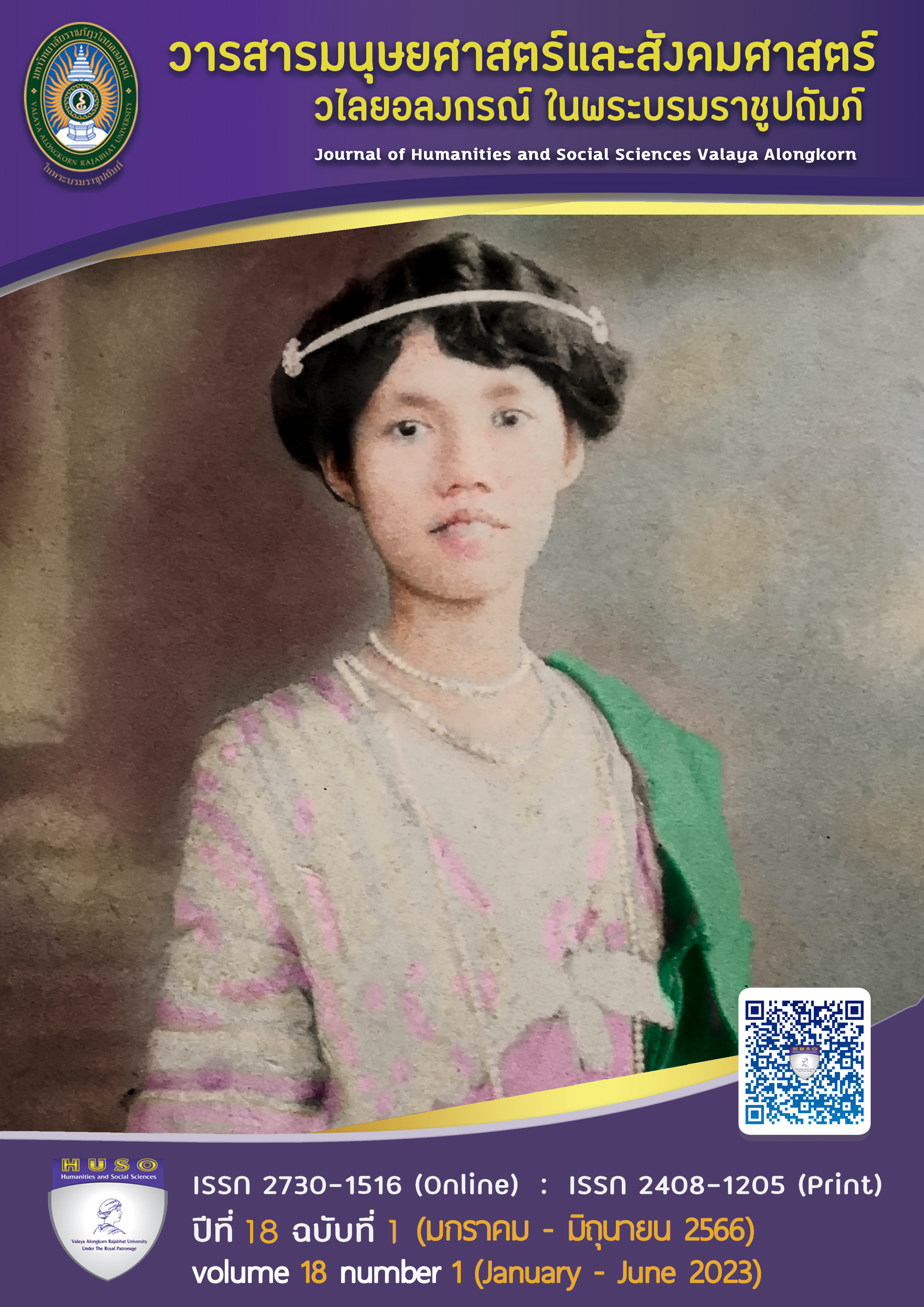STRATEGIC MANAGEMENT OF SPA TOURISM FOR CHINESE TOURISTS IN PHUKET OLD TOWN
Main Article Content
Abstract
This research aims to 1) study the satisfaction of Chinese tourists with spa and health massage services in Phuket Old Town and 2) present spa strategic management for tourism to support Chinese tourists in Phuket Old Town. The research is blended research that combines quantitative and qualitative methods. Data was collected from 400 Chinese tourists who visited and used spa and health massage services in Phuket through a questionnaire. Qualitative research gathered information from 21 key informants through semi-structured interviews.
The research study was found that 1) Overall, Chinese tourists expressed a high level of satisfaction with spa and health massage services in Phuket Old Town. 2) The spa strategic management for tourism to support Chinese tourists in Phuket Old Town includes 2.1) proactive strategies, such as creating an image and public relations through social media to promote Phuket as a city of tourism with high readiness and safety, and encouraging tourism businesses to obtain a SHA certificate; 2.2) remedial strategies, by creating links between spa tourism and community-based tourism; 2.3) preventive strategies, by creating products that showcase the identity
of Phuket Old Town culture and Thai health spas and massages; and 2.4) passive strategies,
by bringing entrepreneurs and stakeholders from all sectors of the tourism industry together to plan for changes in tourists' behavior and epidemic crises that may affect short- and long-term tourism.
Article Details

This work is licensed under a Creative Commons Attribution-NonCommercial-NoDerivatives 4.0 International License.
ลิขสิทธิ์บทความวิจัยที่ได้รับการตีพิมพ์เผยแพร่ในวารสารมนุษยศาสตร์และสังคมศาสตร์ วไลยอลงกรณ์ ในพระบรมราชูปถัมภ์ ถือเป็นกรรมสิทธิ์ของคณะมนุษยศาสตร์และสังคมศาสตร์ มหาวิทยาลัยราชภัฏวไลยอลงกรณ์ ในพระบรมราชูปถัมภ์ ห้ามนำข้อความทั้งหมดหรือบางส่วนไปพิมพ์ซ้ำ เว้นแต่จะได้รับอนุญาตจากมหาวิทยาลัยเป็นลายลักษณ์อักษร
ความรับผิดชอบ เนื้อหาต้นฉบับที่ปรากฏในวารสารมนุษยศาสตร์และสังคมศาสตร์ วไลยอลงกรณ์ ในพระบรมราชูปถัมภ์ เป็นความรับผิดชอบของผู้นิพนธ์บทความหรือผู้เขียนเอง ทั้งนี้ไม่รวมความผิดพลาดอันเกิดจากเทคนิคการพิมพ์
References
กรมสนับสนุนบริการสุขภาพ. (2560). แนวทางการดำเนินงานสถานประกอบการเพื่อสุขภาพ.
กองสถานประกอบการเพื่อสุขภาพ กรมสนับสนุนบริการสุขภาพ กระทรวงสาธารณสุข.
กระทรวงการท่องเที่ยวและกีฬา. (2559, 19 พฤษภาคม). รายงานภาวะเศรษฐกิจท่องเที่ยว ฉบับที่ 3. https://www.mots.go.th/ewt_dl_link.php?nid=7622
กระทรวงการท่องเที่ยวและกีฬา. (2563, 10 กันยายน). สถิตินักท่องเที่ยวชาวต่างชาติที่เดินทางเข้าประเทศไทย.
https://mots.go.th/more_news_new.php?cid=593.
การท่องเที่ยวแห่งประเทศไทย. (2562, 11 สิงหาคม). รายงานภาวะเศรษฐกิจท่องเที่ยว ฉบับ 1 ปี 2562.
https://secretary.mots.go.th/policy/
ฐานิภา ภาณุสุวรรณ และธิตินันท์ ชาญโกศล. (2563). การจัดการการท่องเที่ยวเพื่อไหว้พระขอพรของ นักท่องเที่ยวชาวจีน ในลักษณะการท่องเที่ยวอิสระ บนถนนสายมังกร. วารสารบริหารธุรกิจ และสังคมศาสตร์ มหาวิทยาลัยรามคำแหง, 3(3), 117-131.
ปฏิภาณ บัณฑุรัตน์ และเสรี วงษ์มณฑา. (2563). ความพึงพอใจของนักท่องเที่ยวชาวจีนที่ใช้บริการสปาใน ประเทศไทย. วารสารรัชต์ภาคย์, 14(35), 92-103.
World Tourism Organization. (2021). World Tourism Organization.
https://www.unwto.org/news/2020-worstyear-in-tourism-history-with-1-
billion-fewer-international-arrivals
Yamane, T. (1973). Statistics: An Introductory Analysis. (3rd ed). Harper and Row: New York.


